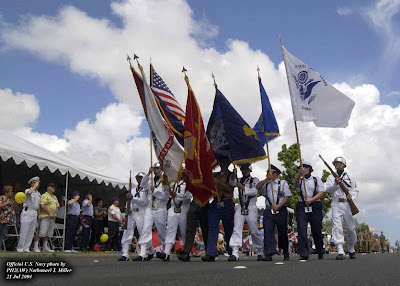Last week I posted an newspaper advertisment written and published by the Organization of People for Indigenous Rights (OPI-R) in the Pacific Daily News in 1985. The ad, titled Kao Magåhet Na Manlibre Hit? was written in Chamorro and discussed briefly the minagahet and chatminagahet of the yearly celebration of "Liberation Day" on Guam. For me, these sorts of writings, which are absolutely political and absolutely written in the Chamorro language, are important because they break that stupid stereotype which so many Chamorros, even those who are interested in or at least say they are interested in protecting and perpetuating the language, are stuck in believing. Namely the "socialness" of the language, or that the language is primarily a means of communicating relaxation, kicking back, family business, gossip, and other fun, but generally unimportant things. To believe that there are things, such as politics, history, activism, which Chamorro is not intrinsically o


